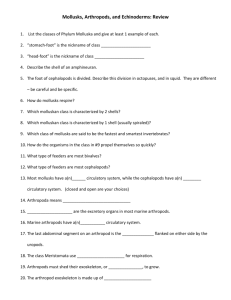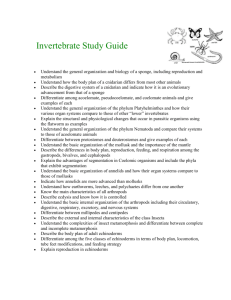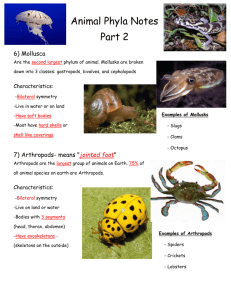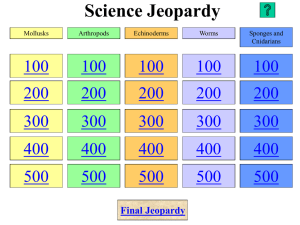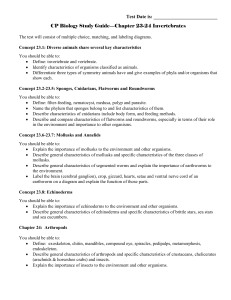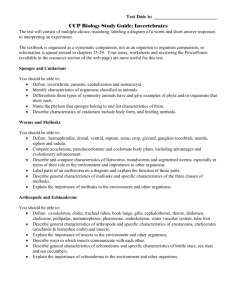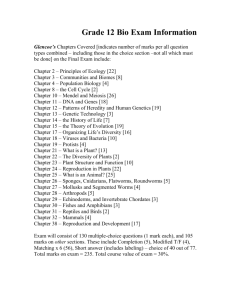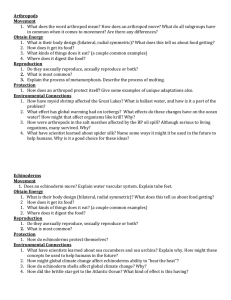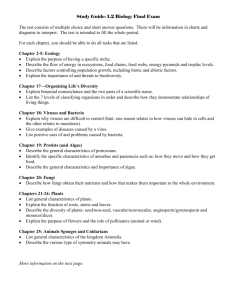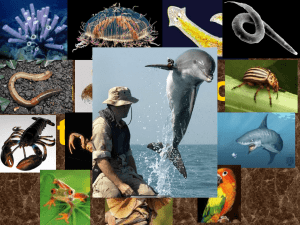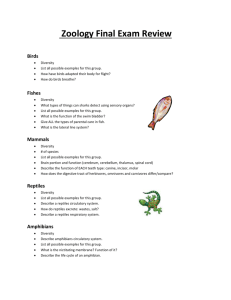Ch 10 Study Guide - Stephanie Dietterle Webpage
advertisement
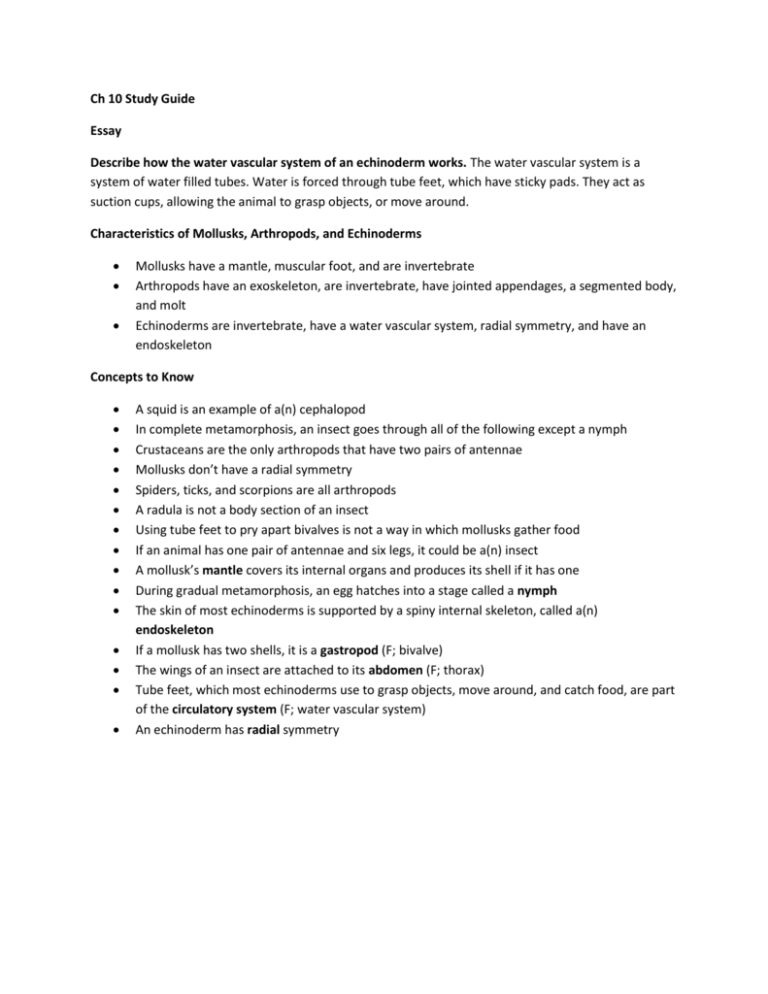
Ch 10 Study Guide Essay Describe how the water vascular system of an echinoderm works. The water vascular system is a system of water filled tubes. Water is forced through tube feet, which have sticky pads. They act as suction cups, allowing the animal to grasp objects, or move around. Characteristics of Mollusks, Arthropods, and Echinoderms Mollusks have a mantle, muscular foot, and are invertebrate Arthropods have an exoskeleton, are invertebrate, have jointed appendages, a segmented body, and molt Echinoderms are invertebrate, have a water vascular system, radial symmetry, and have an endoskeleton Concepts to Know A squid is an example of a(n) cephalopod In complete metamorphosis, an insect goes through all of the following except a nymph Crustaceans are the only arthropods that have two pairs of antennae Mollusks don’t have a radial symmetry Spiders, ticks, and scorpions are all arthropods A radula is not a body section of an insect Using tube feet to pry apart bivalves is not a way in which mollusks gather food If an animal has one pair of antennae and six legs, it could be a(n) insect A mollusk’s mantle covers its internal organs and produces its shell if it has one During gradual metamorphosis, an egg hatches into a stage called a nymph The skin of most echinoderms is supported by a spiny internal skeleton, called a(n) endoskeleton If a mollusk has two shells, it is a gastropod (F; bivalve) The wings of an insect are attached to its abdomen (F; thorax) Tube feet, which most echinoderms use to grasp objects, move around, and catch food, are part of the circulatory system (F; water vascular system) An echinoderm has radial symmetry
